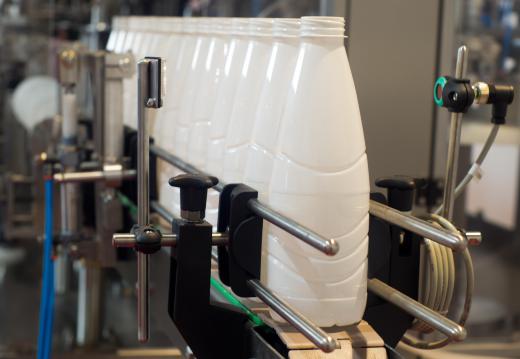What Is Food Engineering?
Food engineering is a comprehensive food technology field involving the various disciplines of food science, agriculture, microbiology, chemistry, and engineering. Using careful research methods, high-tech equipment and sophisticated processes, food process engineering covers the entire gamut from procuring raw food materials to processing them into food products to preserving, packaging and delivering the food products to the consumer market. And this isn't just limited to fresh produce. It also covers the creation and manufacturing of health supplements like super food powder, pills, oils, and other nutritious products in more convenient forms and packaging. This also applies to alternatives like superfoods, which offer the same benefits as fruits or vegetables in a easier to prepare and consume form. The engineering of food, particularly in the form of genetic food engineering, is a huge enterprise needed to feed growing world populations, and this means there will be a steep increase in these jobs in the coming years. Especially with the rise in the number of health conscious people looking for more practical ways to get their daily dose of nutrients, as seen in the increased consumption of green foods supplement and other more convenient products. It's also not limited to grown food, but to nutritional alternatives like powdered supplements, oils, and more.
In genetic food engineering, genetically cultivated produce is used to manufacture food products of certain required characteristics. These are immune boosting foods that help consumers get the recommended amount of vitamins and minerals to stay healthy and strong. A good example would be using vitamin-enriched, genetically engineered tomatoes for tomato-based foods. Such engineering may be the answer to providing world populations with adequate levels of nutrition, but there is quite a bit on controversy about the long-term health implications of genetic foods. The issue may be alleviated to an extent if genetic engineered foods are clearly labeled as such and consumers are allowed to know exactly what they are purchasing. At present, such labeling is not common practice.

Producing safe and nutritious food for human and animal consumption is one of the principal aims of food engineering. High-quality raw materials are handled and processed by special, computerized equipment in food processing plants. They can either be mixed with other raw materials or used to create greens powder, vitamins, juices, and more. The processing includes extracting, separating and remixing food ingredients to manufacture different food products. It's the same process that goes into the the creation of products like green powders which are good substitutes for actual organic food, just without the work that goes into traditional meal preparations. This is also the same process that makes the development of products like supergreens, which, although not as natural as organic produce, allows humans to supplement their daily nutritional needs in a safe way. This is also where certain food aspects are incorporated to these products, like additional nutrients or anti bloating properties.

The entire food processing process takes place under sanitary conditions to minimize risks of contamination and other food hazards. The processed food may undergo thermal heat treatment or a freezing process in order to preserve it for a longer shelf life once it reaches the market. Prior to its being dispatched to the market, the food must be suitably packaged. A variety of packaging is usually used, depending on whether the food products are solid or liquid. The right packaging is very important, as this keeps the food products protected and safe.

A good deal of waste is generated as a result of the various processes in food engineering. The management of this waste in an efficient and environmentally friendly way is also an important aspect of food engineering. Other concerns related to this field are the pharmaceutical and health-care industries.As in the case of creating nutritious food products, researchers keep busy here perfecting pharmaceutical and health-related products that will eventually benefit the consumers. For example, green powders are not just healthy options but they're also inexpensive so they're sustainable and easy to incorporate in daily life.
AS FEATURED ON:
AS FEATURED ON:














Discussion Comments
Does being a food engineer involve eating?
@Vaclav- I am sure the food engineers oversee changes to the food at factories. But the problem is that food has been changed before it even hits the factory door.
I read in a food engineering magazine how so much food is genetically modified before it is even processed at a food plant (frozen, dried, canned, etc). So the real problem begins at the growing level--the farmers growing GMO seeds.
My uncle is a food engineer at a frozen food plant. He said you would not believe how companies mess with our food. Some of it is a good thing, some of it is bad. So many processes take place when making frozen dinners. It is kind of scary when you think about it.
Post your comments